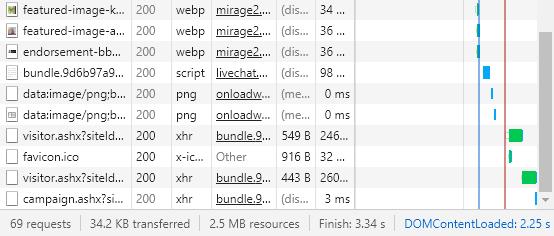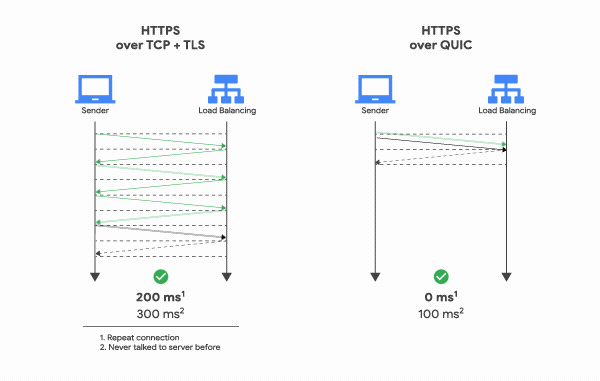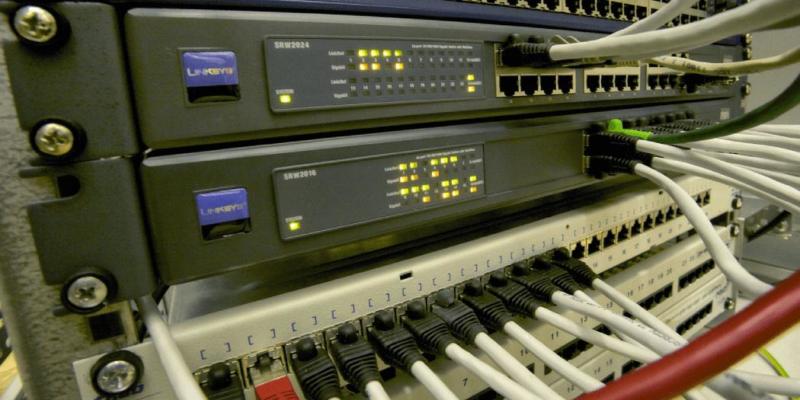What HTTP/3 Is (And What This Update Means for You)
You’re probably already familiar with HTTP. It’s the protocol that makes the modern internet possible. Without it, you wouldn’t be able to spend hours on Instagram, Facebook, or even this blog, so we all owe a lot to it.
What you may not know is that the protocol in use right now is HTTP/2, and there’s actually a new version on the way. HTTP/3 is a big deal. It’s going to set a new standard for the web, by moving from a Transmission Control Protocol (TCP) to Quick UPD Internet Connections (QUIC). If you don’t know what that means, don’t worry – we’ll explain it in a moment.
In this article, we’re going to break down what HTTP is and how it works. We’ll also introduce you to HTTP/3, and discuss what it brings to the table. Let’s talk about protocols!
What HTTP Is (And How It Works)
HTTP encompasses a set of rules that govern the way websites use and transfer files to users, or more specifically to their browsers. Under this model, your browser becomes a ‘client’ that connects with servers by using ‘daemons’.
A daemon is a program built to respond to HTTP ‘requests’, which occur whenever you access a website. In practice, the entire process happens seamlessly in the background whenever you click on a URL or type in an address.
However, in most cases, every single website you visit involves your browser making dozens of requests in the background. Here’s a quick look at a random sample of requests from a single page, recorded using Chrome Dev Tools:

All of this activity happens over TCP. That’s the protocol that handles data delivery from one IP address to another, which covers both servers and clients. We’ve been using TCP for communications for over 40 years now.
TCP does its job well, but that doesn’t mean there isn’t any room for improvement. That’s where QUIC comes in, and is what we’ll cover next.
The Differences Between HTTP/2 and HTTP/3
As we mentioned earlier, there’s more than one version of HTTP. The standard right now is HTTP/2, with support for version three already rolling out in some browser test builds, including Chrome Canary and Firefox Nightly.
The primary difference between HTTP/2 and HTTP/3 boils down to the TCP and QUIC protocols. HTTP/3 makes the switch to QUIC, which promises a significant performance boost for most connections. The difference between these protocols boils down to ‘handshakes’.
When two points of a network exchange signals in order to establish a connection, that’s called a handshake. With the TCP protocol, your browser needs to establish three handshakes to make a valid connection. Here’s a handy animation from Google that shows how the handshake process plays out over TCP vs. QUIC:

The more hands you have to shake, the longer it takes to establish a connection. By using QUIC, your browser only needs to shake a single hand. Let’s talk about what that means for you.
What the Release of HTTP/3 Means for Users
The switch from TCP to QUIC comes with multiple tangible benefits, including:
- Lower latency. This means websites and services should load faster. During some tests, Google found that using QUIC sped up search results by 3.6%, and cut YouTube loading times by 15%.
- Lower impact when you switch between networks. Traditionally, if you move from WiFi to a mobile network, your browser needs to ‘renegotiate’ sessions. With QUIC, that handover process is no longer necessary.
QUIC is all about increasing the performance of the web. For your users, that means faster-loading websites and applications, which makes for a more enjoyable experience. Several popular services, such as Cloudflare and Google, have already begun using QUIC on their ends.
Right now, you can enjoy the benefits of QUIC by using any browser that already supports the protocol. Some web hosts are already offering HTTP/3-enabled servers as well. If your site’s visitors use browsers that support the new protocol, they should enjoy reduced loading times.
Of course, most end users might not even know that we’re on the brink of a major change to the way that browsers interact with the web. However, as HTTP/3 support rolls out for more browsers, they will feel its impact.
Conclusion
Support for HTTP/3 is already on its way for the major browsers. A lot of services, such as Cloudflare, have already added HTTP/3 support for their users, and here at A2 Hosting we’re not falling behind. You can sign up for an HTTP/3-enabled Turbo hosting plan right now.
As for why HTTP/3 is excellent news, the switch from the TCP to QUIC protocol means the internet will get a lot faster. Websites will take less time to load, memes will show up faster, services will get better, and more. All you have to do is sit back and enjoy the change.
Image credits: Pixabay, Google Cloud Platform Blog.
